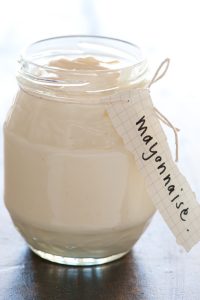New podcast alert!
This month I’ve been talking to three researchers at Imperial College London about their work on formulations. Formulations are a class of modern products which are all complex mixtures of many different elements. The evidence is the ingredients list on the back of the packet. These kinds of advanced formulated chemical products are everywhere in modern life: we use them daily to stay healthy, warm, dry, fed, clean and connected.
Listen to the full podcast episode on formulations here
Made things
Jerry Heng, one of the interviewees in the podcast, and Professor in Particle Technology in the Department of Chemical Engineering, said to me this week:
“I’m an engineer: I like to make things. Engineers make things in various forms. Some build roads, some build tall structures and buildings, some build telecommunication towers and systems. I build particles and formulated products.”
Engineers like formulations because they are made, created. They are more than the sum of their parts. Their properties depend on their ingredients and the processing of those ingredient. For example, the combination order of the ingredients can make a big difference. Making mayonnaise is a good example!

Complex and complicated
This makes them both complex and complicated, said João Cabral, Professor of Soft Matter, also in the Department of Chemical Engineering.
“How the entire formulation, which often has 20-odd ingredients or so, is put together, remains really quite mysterious. Because often these things have evolved in an incremental way, incremental in knowledge but also additive. You have an issue and the way to solve the issue is to add something else, which shifts the goalposts, so the issue is mitigated. If you try to do the opposite, which is to do a reduction of a formulation, that is actually quite a topical objective for the field. How to you reformulate by simplifying, rolling things back, rather than evolving additively?”
Differences between manufacturers
The climate impact of formulations also depends on their ingredients and processing. This impact can happen during development, manufacturing, transport or use. Different companies and industries can differ hugely in how much attention they have paid to this impact, and how fast they are moving towards reducing their resource footprint. I asked Nazila Kamaly, Senior Lecturer in the Department of Chemistry, about the pharma industry.
“Some are starting to be ahead of the curve, and some are still quite rooted in more traditional manufacturing processes. There are so many other aspects, economies of scale… Change to some industries is more difficult to achieve than others.”

Listen to these researchers talking formulations in full podcast episode
Find out more about training the next generation of formulations scientists